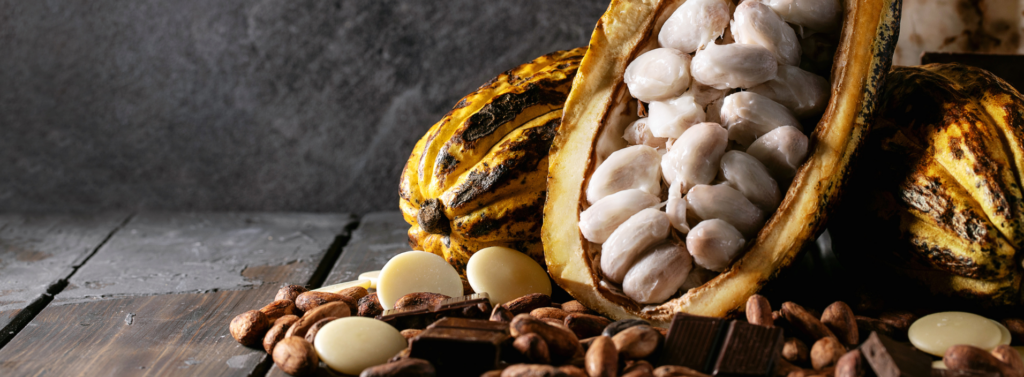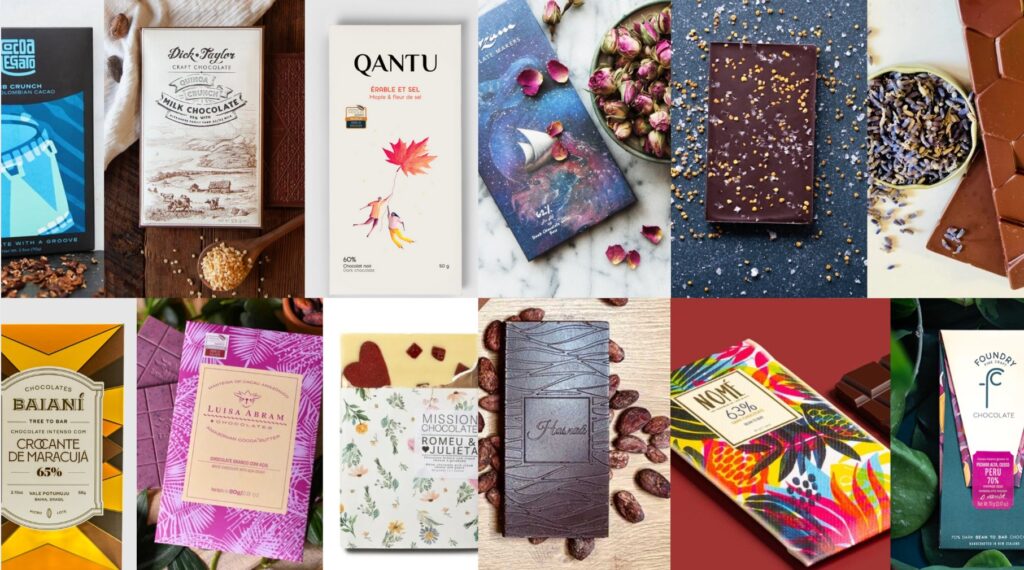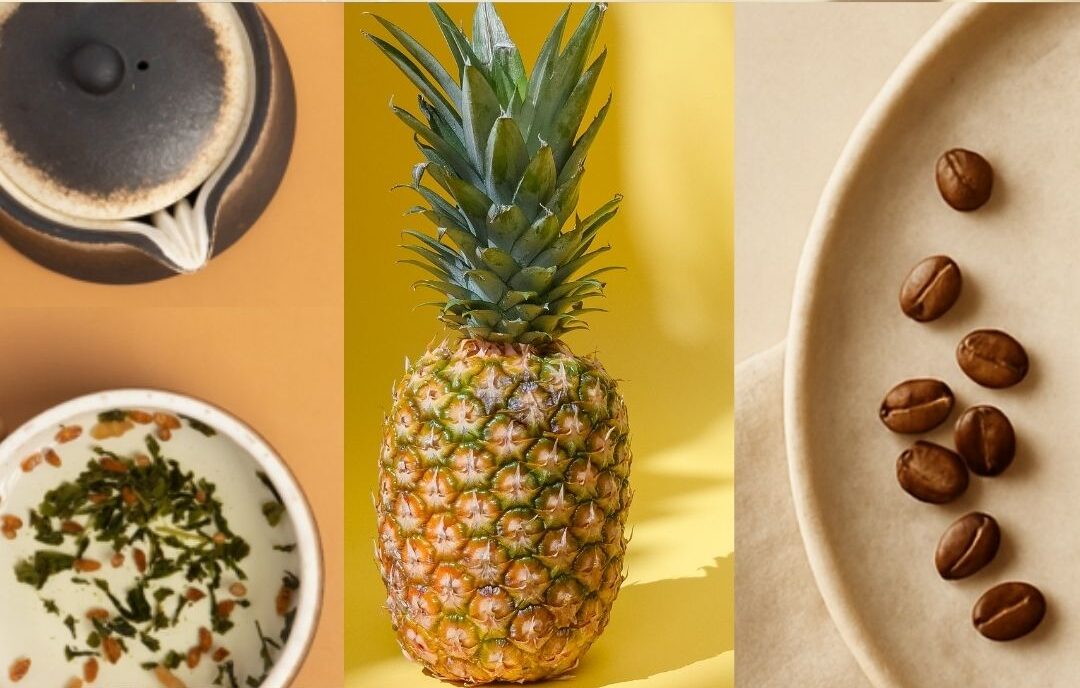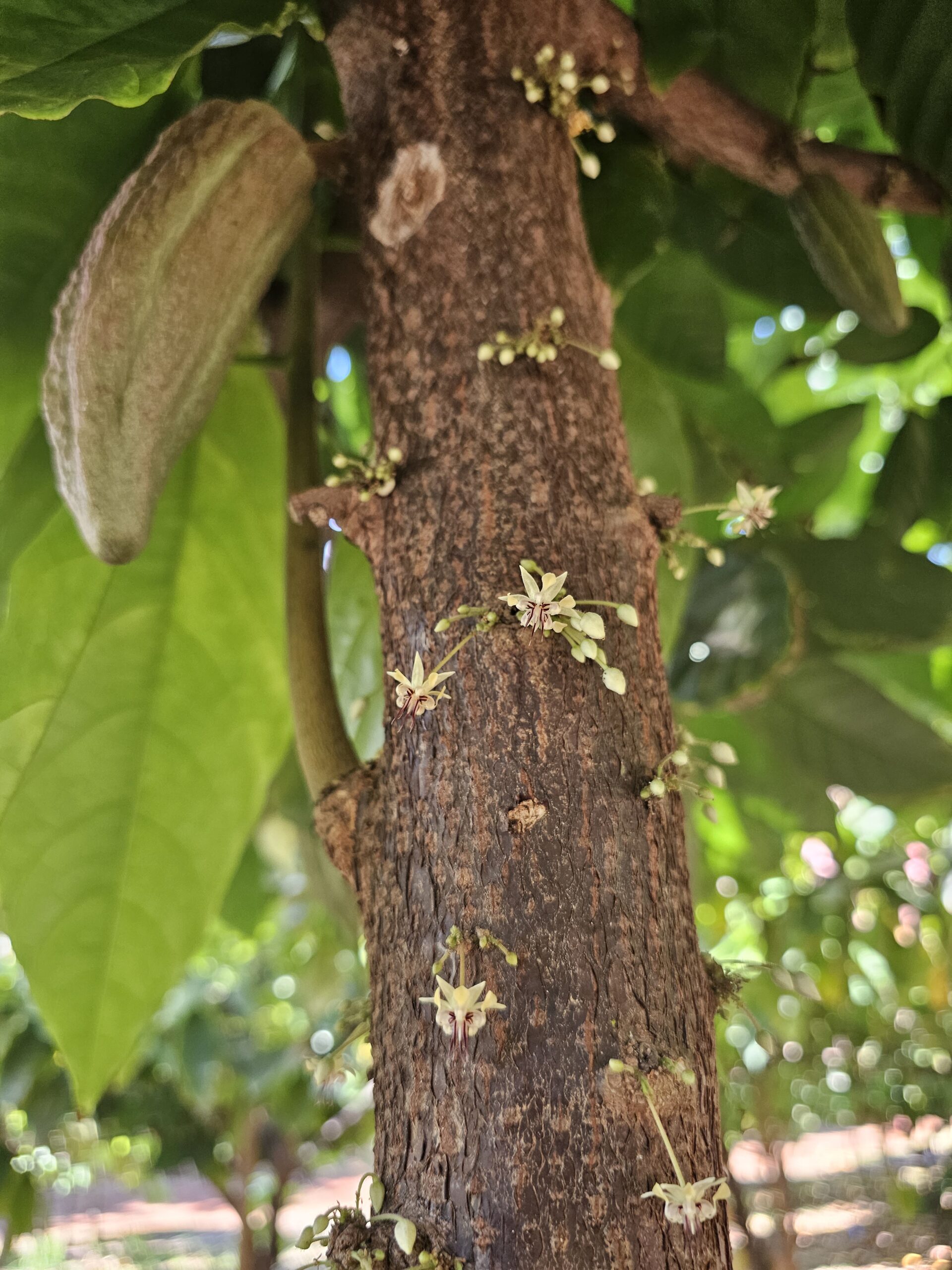The bean to bar process! Part Three: Fascinating Fermentation
Published
This is where we try and make micro organisms more... interesting?
But it is!
It actually is interesting.
Why? Because we’re eating mini microbes every day (doesn’t that make you salivate haha!)
Before we get into it, if you haven’t read the other posts in this four part series we recommend you start here.
By now you might have realised that we like to do a little scene setting. So this time, have a look inside your fridge or think about what’s in your fridge right now. Try to not get too hungry.
And of all the items in your fridge, which ones have been fermented?
In other words, which foods have a bit of funk to them and have gone through that intentional process of allowing yeast or bacteria to change it’s structure. Are there any that jump out at you and are there others where you think, surely THAT’s funky enough to be fermented? .
- You might have some cheese? That’s fermented.
- Maybe some sauerkraut or kimchi? They’re both fermented too.
- Beer? Definitely fermented.
- But what about chocolate?
That’s right this part is all about the fascinating and unknown stages of how farmers prepare the beans – which includes fermentation. We’ve mentioned that when we picture the chocolate making process, it’s usually a conveyor belt of chocolate, or a person in chef whites teasing out all that chocolate, but we never picture the field it’s grown in.
And now that we think about it, we never picture the farmers that harvest and prepare those beans for the chocolate making process.
And of all the different stages within chocolate making, fermentation is the most unexpected part of the process.
And the most critical. And it’s all done by the farmers.
Before we get into how the fermentation process is critical and that without out it, there’s basically no chocolate, we’re going to go a little overboard on the concept of fermentation because its unbelievable. It almost feels like an accident that happened to be good and we’ve been doing it intentionally ever since.
Fermenting creates flavour. It basically transforms food without the need for additional heat. Its the work of microbes from yeast or bacteria and they do all the work that heat would normally do and change the food’s form, turning it into something delicious.
So many foods are fermented. Without looking it up our minds goes straight to kimchi and sourdough bread. After a quick google, we learnt about salami, about cheese, beer and kombucha.
[Brace yourselves – Short tangent!]
Some of the worlds greatest foods involve fermentation and so we shouldn’t have been surprised when we learnt that the chocolate making process involved it too.
And this is a process that dates back centuries. Ancient civilisations of South America, the Mayans and the Aztecs, not only saw the beans as valuable and traded it as currency, but they enjoyed chocolate after the beans had gone through that fermenting process. They even included a very early form of chocolate in their rituals and religious ceremonies.
And the chocolate rituals still continue to this day in western society as gift giving, the festive themed treats, think Easter and the chocolate egg, Christmas and those gorgeous Advent calendars, Valentines Day and glossy melt in your mouth bonbons. And these modern forms of chocolate gifting made us assume and think of chocolate as a western delicacy or special treat, but really it’s been around for centuries and actually its more than that – it’s been around as an exceptional food source for centuries.
But then to bring it back down again!
Chocolate has just come from a seed that’s been allowed to sweat in it’s own juices and microbes. And because we like the end result, we say the bean has been fermented. Technically it has just rotted in a favourable way… And if it weren’t for the Mayan and the Aztecs finding the fruit, and fermenting those seeds we wouldn’t have the chocolate we have today.
And how are those beans fermented?
And how is it that the beans are fermented and not just rotten at the end of it?
And how does it help make chocolate?
This is where the farmers play a critical role, because the fermenting process is what actually creates that chocolate flavour. And fermenting the beans:
- for not long enough
- for TOO long
- in an uneven way
can skew that flavour.
It’s a risky process. Any type of fermentation is risky when you think about it, you have to make sure you stick to the fundamentals to make sure we ferment and don’t rot the product and in the case of chocolate end up with off flavour notes.
So here’s the process [its a heavy section].
- The farmers harvest the cacao pods off the cacao trees, split those pods in half and extract all of the pulp and seeds.
- As soon as those seeds are exposed to the air, that’s when the fermentation process begins.
- All of the pulp and seeds are then placed into boxes which is where this amazing transformation happens. – These boxes aren’t anything fancy. Usually just timber boxes that can hold kilos and kilos of seeds and pulp.
- These are then covered with a burlap material to ensure no more oxygen can get in. In some cases, instead of boxes the farmers may use bags or even just pile the seeds and pulp onto banana leaves and then cover them with more banana leaves to prevent any oxygen from getting in.
The whole idea is that encasing the seeds and pulp will allow the temperature of the seeds to rise and maintain the required temperature for fermentation to occur.
This happens because the sugars and acids in pulp surrounding the beans are perfect for starting the anaerobic fermentation process, that is fermentation without air.
And that’s just the starting point.
- The breakdown of the pulp in turn protects the fats within the bean (where those fats are the much needed cocoa butter.
- Once the anaerobic fermentation process has kicked off and the lactic, citric, and acetic acids have been created, the next phase, aerobic fermentation can begin. The boxes of seeds are stirred, turning the beans and allowing oxygen back in. Some farmers shift the beans from box to box, a new box for a new day of fermentation and the shift of the seeds allows enough oxygen in.
- Day by day the temperatures continue to increase. Don’t forget that all of this is happening in a warmer climate right.
So the starting temperature of the heap of beans is around 30C, and over four days of fermenting, the beans by themselves will reach 50C. This heat allows the acids to “enter” the seed and stop the seed from germinating. This is when it goes from being a cacao seed to a cacao bean.
- And the continual breakdown of the proteins, fats and sugars within the bean creates the unique flavours within. The beans will continue to ferment and then by the 7th day, all that white pulp will have become the brown chocolatey colour that we’re all familiar with.
And here’s a small glimpse into flavour notes.
The farmers need to make sure the seeds are optimally fermented.
- Too much fermentation will lead to a rise in bad bacteria and mould, resulting in off-flavour notes like cheesy notes, sweaty meat notes.
- Too little fermentation and the chocolate flavour won’t have had enough time to even develop and might taste flat, or bitter.
- Uneven fermentation, where some beans are over and others are under fermented in the same pile can also negatively affect the flavour notes so it’s crucial to get it right.
And that whole process is just fermentation.
Once that’s done the farmers have one more critical step and that’s drying the beans to end the fermentation process.
The beans are spread out into a thin layer on drying beds to allow for a slow even drying process, and it needs to be slow and even so the moisture comes out and the acidity remains. Again there are hurdles here:
- Too fast and the moisture trapped inside can cause the beans to go mouldy.
- Smoke dried can mean the moist fermented beans may absorb the smoke from the atmosphere, resulting in chocolate with smokey notes.
So much importance is placed on the farmer’s process to create beans that carry their own unique chocolate flavour and it’s fascinating because you’ll walk through these farms and be surrounded by the smell of chocolate that’s wafting from these drying beans.
And finally, once they’re dried they are collected into sacks ready to be shipped to chocolate makers.
Phew… The key thing that I’m hoping sticks after this episode is that the chocolate making process begins well before the beans reach the hands of a chocolate maker and that the farmers play a huge role in making that happen.
Actually, it pretty funny to think that the farmers and the chocolate makers put in so much work to give us the chocolate we have today, but the other workers are the tiny microorganisims in those hot boxes, fermenting away, doing what they do best and if they didn’t do that, we wouldn’t even have the chocolatey, fruity, nutty notes to even extract in the first place!
I’ve got a little side note here to remind me to talk about the historical milestones of discovering chocolate, but that’s most likely going to happen in another month or two. For now it’s:
- chocolate making,
- fermenting,
- drying,
- the farmers getting cacao beans ready for the chocolate maker to turn those beans into chocolate.
And that’s the next and final part!
In the meantime, open up your fridge again and look at the fermented products in there, savour the funkiness that come from all those good enzymes. And then look at a chocolate bar and really think about how without good bacteria, without the Mesoamericans discovering the wonders of a fermented bean and passing on that process to current day farmers we wouldn’t have chocolate.
It’s pretty nuts hey…
Thanks heaps for talking beans with us and hopefully we’ll see ya soon!
Where to next?
Last stop!! Continuing on our four part trip – your next stop is….
And if you’re still not so sure, check out what events or makers are in your area:
Talk Beans with us!
Got any questions? Feedback? Want to hi say? Reach out below – we’re always happy to chat!
Upcoming Event/s
The Bean to Bar Process Articles
‘15 December 2025’
The bean to bar process! Part Four: Small Batch Chocolate Making
How small batch chocolate makers are revolutionizing chocolate as we know it.
‘15 December 2025’
The bean to bar process! Part Three: Fascinating Fermentation
This is where we try and make micro organisms more... interesting?
‘15 December 2025’
The bean to bar process! Part Two: Chocolate Trees
Well technically, growing cacao beans.








 Contents: Your Guide To Everything Beanstalkr And Exploring the World of Bean-to-Bar Chocolate:
Contents: Your Guide To Everything Beanstalkr And Exploring the World of Bean-to-Bar Chocolate:  The Next Wave of Chocolate: Health, Mindfulness, and Meaningful Making
The Next Wave of Chocolate: Health, Mindfulness, and Meaningful Making  Serious Fun for Serious Flavor: Chocolate Workshops to Spark Your Creativity
Serious Fun for Serious Flavor: Chocolate Workshops to Spark Your Creativity  The Workshops That Bring Chocolate to Life at the Midwest Craft Chocolate Festival 2025
The Workshops That Bring Chocolate to Life at the Midwest Craft Chocolate Festival 2025 
Leave a Reply